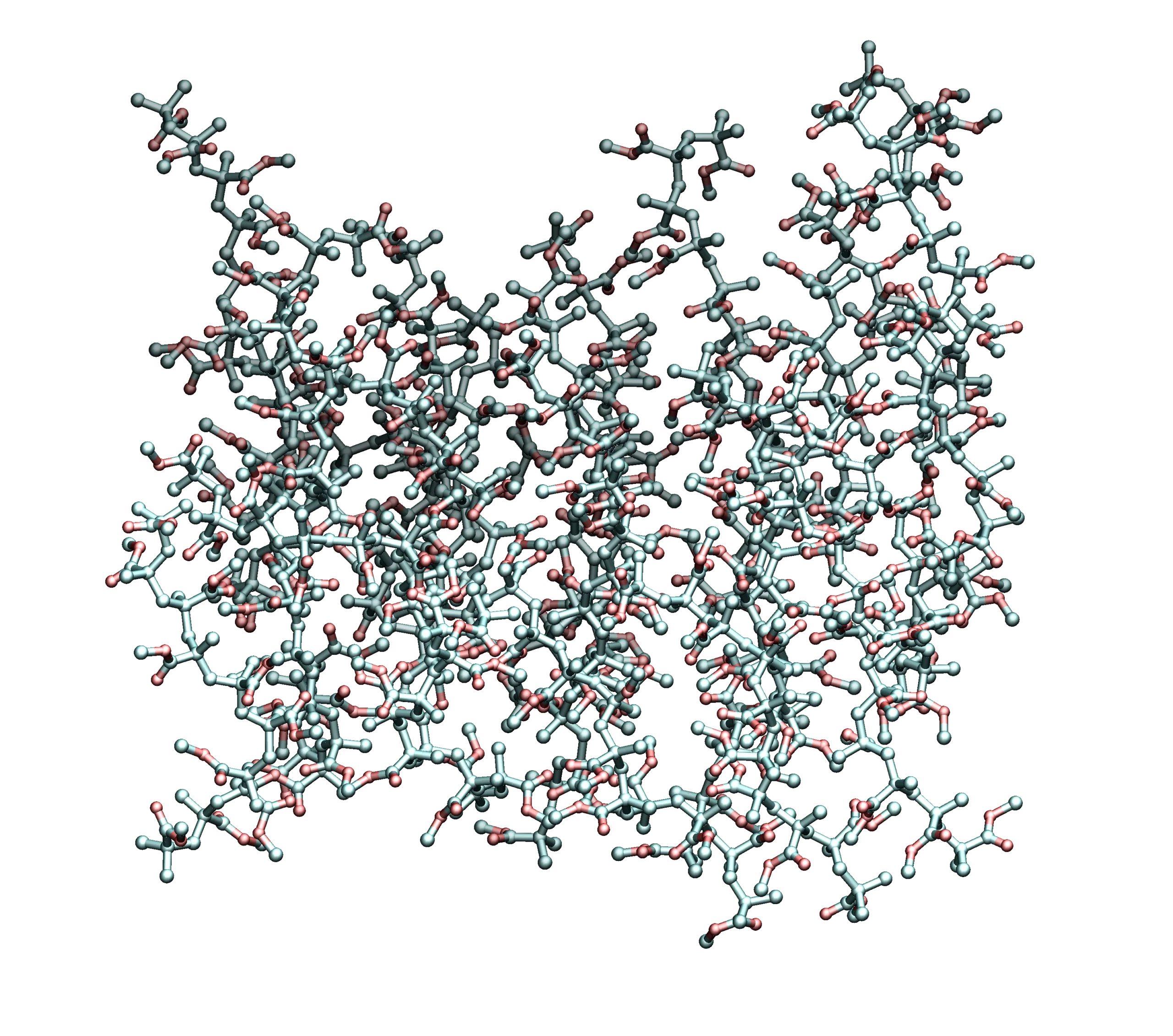Chemical Material Design
Multiscale Materials Design from Atomistic Simulation to Property Prediction
Integrate QM, MD, and multiscale simulations to predict structure, transport, and lifetime — delivering validated insights before synthesis

Clarify material class, use-case, and target specs
Define the material type (e.g., polymer, electrolyte, coating), composition/morphology, and operating window. Set measurable targets—conductivity, modulus, permeability, thermal/chemical stability—with decision thresholds and lab readouts to anchor the modeling plan.
Integrate QM → atomistic MD → coarse-grained/mesoscale
Using DFT/ab-initio methods for electronic structure calculation to understand reactive events, all-atom MD for local interactions/solvation, and coarse-grained or mesoscale models for long-timescale morphology. Select force fields/mappings and boundary conditions, and define verification checks against reference data.
Resolve packing, phases, and interfaces that control function
Predict chain conformations, packing, free-volume distributions, and phase behavior for polymers; map ion solvation shells for electrolytes. Model critical interfaces (polymer–filler, electrode–electrolyte/SEI), compute interfacial energies, and extract contact/coordination statistics to explain emergent properties.
Transport, mechanics & lifetime prediction
Compute diffusivity (MSD), ionic/electronic conductivity (Nernst–Einstein/Green–Kubo), permeability/viscosity, glass transition, and mechanical moduli directly from simulations. Probe degradation and aging via accelerated MD, rare-event sampling, or QM reaction pathways to identify bottlenecks and lifetime drivers.
Deliver a minimal-variant “recipe” for experiment
Use sensitivity analyses, design-of-experiments, and ML/surrogate models trained on simulation outputs to propose ranked formulations with uncertainty bands and processing windows. Prioritize a compact validation matrix; ingest new data to re-rank, retrain, and iterate the materials design cycle.
Compare pricing
Compare our plans
Depending on system size, compute usage & level of support.
Project Scope | 1–2 systems, low–medium complexity | Multiple systems, high complexity | Long-term support, flexible tasks |
Methods | Basic/diverse docking; short–mid MD; µs-level MD; preliminary ML | Extended MD; FEP/TI; DFT; custom ML/workflows | Priority resources; advisory analysis; ad-hoc studies |
Deliverables | Full report + reproducible workflow (includes quick results + summary) | Complete technical dossier + reusable pipeline | Continuous deliverables with monthly milestones |
Use Cases | Feasibility, lead triage, publication-ready prep | Lead optimization, regulatory/Review-ready submissions | Ongoing R&D and parallel projects |
Customizable Report | Fixed Templates |
FAQ
Expert Insights. Scaled to Your Needs
How does the consulting process work?
Our process follows six steps: Scope Determination → Solution Proposal → Pilot Study → Result Presentation → Evaluation → Finalization & Execution. This ensures transparency and alignment at each stage.
What engagement models do you offer?
We offer fixed-price, milestone-based, time-and-materials, and retainer models, depending on project needs and level of support required.
How long does a typical project take?
Timelines depend on complexity, but small pilot studies can be completed in 2–4 weeks, while full-scale projects usually take 2–3 months or more.
Who owns the results and intellectual property?
Clients retain full ownership of results and foreground intellectual property. We work under NDA and provide clear IP agreements.
What types of systems do you work on?
We work across nucleic acids (natural and chemically modified), proteins, small molecules, polymers, and aqueous or complex chemical systems. Our workflows are adaptable to diverse research questions in biology, chemistry, and materials science.
Can you integrate experimental data into the modeling workflow?
Absolutely. Experimental observations such as binding assays, thermodynamic measurements, or structural data can be used to calibrate, benchmark, and validate our computational results.
How reliable are the predictions?
Our results are supported by validation against reference data, convergence diagnostics, and explicit reporting of uncertainties. We emphasize reproducibility and clearly state limitations alongside predictions.
Can you customize workflows for specific problems?
Yes. Every project is tailored to the client’s system, objectives, and available data. We design flexible workflows that balance accuracy, scalability, and cost.
What deliverables will I receive at the end of a project?
Deliverables typically include a detailed report with figures and tables, curated datasets, and reproducible workflows or scripts. All results are prepared to be publication- or presentation-ready.
Do you work with both academic and industry groups?
Yes. We collaborate with academic labs, biotech startups, and established companies worldwide.
Can you support grant or funding applications?
Yes. We provide preliminary computational results, methods descriptions, and figures that can strengthen the technical case of grant or funding proposals.
Can you scale computations using cloud resources if needed?
Yes. We routinely deploy workflows on cloud platforms for large-scale simulations, ensuring cost-efficiency, scalability, and secure data management.
Connect. Collaborate. Grow.
Be part of a growing community of molecular modeling and simulation. Share insights, discuss strategies, and stay updated with the latest trends.
